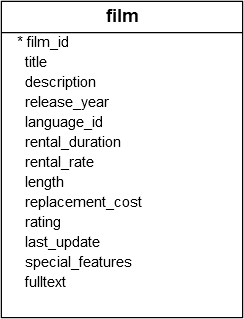八月 19, 2023
摘要:在本教程中,您将学习声明 PL/pgSQL 变量的各种技术。
目录
PL/pgSQL 变量简介
变量是内存位置的有意义的名称。变量保存可以通过代码块更改的值。变量总是会关联特定的数据类型。
在使用变量之前,必须在 PL/pgSQL 代码块的声明部分中声明它。
下面说明了声明变量的语法。
variable_name data_type [:= expression];
在这个语法中:
- 首先,指定变量的名称。为变量分配一个有意义的名称是一个很好的做法。例如,您应该使用
index或counter来命名变量,而不是i。 - 其次,将特定数据类型与变量相关联。数据类型可以是任何有效的数据类型,例如 integer、numeric、varchar 和 char。
- 第三,可以选择为变量分配默认值。如果不这样做,变量的初始值为
NULL。
请注意,您可以使用:=或=赋值运算符来初始化变量并向变量赋值。
以下示例说明了如何声明和初始化变量:
do $$
declare
counter integer := 1;
first_name varchar(50) := 'John';
last_name varchar(50) := 'Doe';
payment numeric(11,2) := 20.5;
begin
raise notice '% % % has been paid % USD',
counter,
first_name,
last_name,
payment;
end $$;
该counter变量是一个整数,初始化为 1。
first_name和last_name是varchar(50)类型,并初始化为'John'和'Doe'字符串常量。
payment的类型为 numeric,其值初始化为20.5。
变量初始化时序
PostgreSQL 计算变量的默认值,并在进入代码块时将其分配给变量。例如:
do $$
declare
created_at time := now();
begin
raise notice '%', created_at;
perform pg_sleep(10);
raise notice '%', created_at;
end $$;
这是输出:
NOTICE: 14:23:33.064008
NOTICE: 14:23:33.064008
在这个例子中:
- 首先,声明一个变量,其默认值初始化为当前时间。
- 其次,打印出变量的值,并使用
pg_sleep()函数在 10 秒内通过执行。 - 第三,再次打印出
created_at变量的值。
从输出中可以清楚地看出,created_at的值仅在进入代码块时初始化一次。
复制数据类型
%type提供了一个表列或另一个变量的数据类型。通常,您使用%type来声明变量,保存来自数据库或其他变量的值。
下面说明如何声明具有一个表列的数据类型的变量:
variable_name table_name.column_name%type;
下面展示了如何使用另一个变量的数据类型来声明一个变量:
variable_name variable%type;
请参阅示例数据库中如下的 film 表:

此示例使用类型复制技术来声明保存来自film表的值的变量:
do $$
declare
film_title film.title%type;
featured_title film_title%type;
begin
-- get title of the film id 100
select title
from film
into film_title
where film_id = 100;
-- show the film title
raise notice 'Film title id 100: %s', film_title;
end; $$
此示例声明了两个变量:
film_title变量与示例数据库中film表中的title列具有相同的数据类型。featured_title变量的数据类型与film_title变量的数据类型相同。
通过使用类型复制功能,您可以获得以下优势:
- 首先,您不需要知道所引用的列或引用的类型。
- 其次,如果引用的列名(或变量)的数据类型发生变化,则无需更改函数的定义。
块和子块中的变量
当您在子块中声明一个与外部块中的另一个变量同名的变量时,外部块中的变量将在子块中被隐藏。
如果您想要访问外部块中的变量,可以使用块标签来限定其名称,如下例所示:
do $$
<<outer_block>>
declare
counter integer := 0;
begin
counter := counter + 1;
raise notice 'The current value of the counter is %', counter;
declare
counter integer := 0;
begin
counter := counter + 10;
raise notice 'Counter in the subblock is %', counter;
raise notice 'Counter in the outer block is %', outer_block.counter;
end;
raise notice 'Counter in the outer block is %', counter;
end outer_block $$;
NOTICE: The current value of the counter is 1
NOTICE: Counter in the subblock is 10
NOTICE: Counter in the outer block is 1
NOTICE: Counter in the outer block is 1
在这个例子中:
- 首先,在
outer_block块中声明一个名为counter的变量。 - 接下来,在子块中声明一个同名的变量。
- 然后,在进入子块之前,counter 的值为 1。在子块中,我们将
counter的值增加到 10 并将其打印出来。请注意,更改仅影响子块中的counter变量。 - 之后,使用块标签引用外部块中的
counter变量,以限定其名称outer_block.counter。 - 最后,打印出外部块中
counter变量的值,其值保持不变。
在本教程中,您学习了声明 PL/pgSQL 变量的各种方法。

